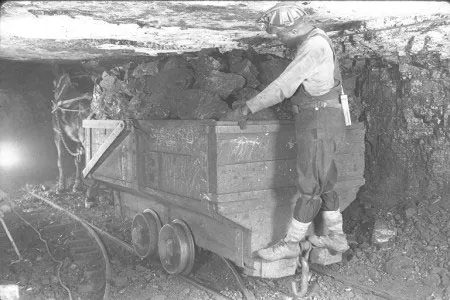Imagine standing before an abandoned coal mine in Arizona, once a symbol of resource extraction and environmental pollution. Today, this site might become a surprising source of renewable energy, thanks to groundbreaking discoveries by scientists from the University of Arizona. Tours exploring abandoned mines in Arizona not only offer unique travel experiences but also provide a new perspective on the future of sustainable energy.
Incredible Discoveries Beneath Arizona’s Abandoned Mines
At an old coal mine in Louisiana, researchers from the University of Arizona found something fascinating: bacteria living off CO2 and coal, producing natural gas (CH4). What’s remarkable is that the CO2 in this setting wasn’t naturally occurring. Back in the 1980s, an oil company experimented with injecting CO2 into deep underground reservoirs to extract crude oil later but eventually abandoned the project.

Since then, these bacteria have been “busy” processing the injected CO2, combining it with hydrogen from coal seams and other nutrients to convert coal and CO2 into usable fuel. This discovery has opened up promising new avenues for sustainable energy extraction.
From Resource Extraction to Renewal: A Transformative Shift
Instead of destroying and burning coal mines, which would release large amounts of CO2, we can now preserve these mines and “cultivate” them with bacteria and CO2. This means we could transform vast coal reserves across the globe into renewable energy sources. This marks a historic shift in how we view and utilize natural resources.
Peter Warwick from the U.S. Geological Survey noted that approximately 20-25% of the world’s natural gas originates from the activity of underground bacteria. He remarked: “We could never outdo them. This is because modern mining has already depleted methane reserves that accumulated over thousands of years.”
Great Potential and Challenges Ahead
The University of Arizona’s study has stunned the scientific community, as no one had imagined that bacteria could convert CO2 into natural gas fast enough to serve as a practical energy source for modern society. This discovery has drawn significant interest, especially from biologist Craig Venter, who specializes in accelerating bacterial processes to enhance efficiency.
However, this method comes with certain requirements. First, the bacteria need adequate nutrients, including acetate and hydrogen, to process CO2. Additionally, their productivity improves when groundwater seeps into the rock layers at just the right ratio. These challenges must be addressed for this technology to be widely implemented.
Abandoned Mine Tours: Unique Experiences with Meaningful Insights
Tours of abandoned mines in Arizona offer not just adrenaline-packed adventures but also opportunities to delve into groundbreaking scientific discoveries and renewable energy potentials. Visitors can explore the mines, learn about the history of coal mining, and discover how bacteria convert CO2 into natural gas.

These tours can also incorporate educational activities, helping participants better understand the importance of environmental protection and sustainable energy development. This is an excellent way to combine tourism with learning, creating meaningful and memorable experiences.
Toward a Sustainable Energy Future
Given the tremendous potential of this discovery, many commercial ventures are eager to profit from this new research. Warwick commented: “Many companies are looking to capitalize on this research. The truth is, it’s easy to dig up coal and burn it. But now we must ask ourselves—why not inject CO2 for bacteria to generate fuel instead?”
Developing this technology could lower CO2 emissions into the atmosphere while creating clean and renewable energy. This represents a major step forward in combating climate change and protecting the environment for future generations.
Conclusion
The discovery of bacteria converting CO2 into natural gas in Arizona’s abandoned mines has introduced a promising new frontier in renewable energy. Tours of abandoned mines in Arizona not only offer distinctive travel experiences but also educate visitors about the potential of this innovative technology. In the future, we hope to harness this energy source more effectively, contributing to a greener and more sustainable world. What are your thoughts on the potential of abandoned mines for renewable energy production?